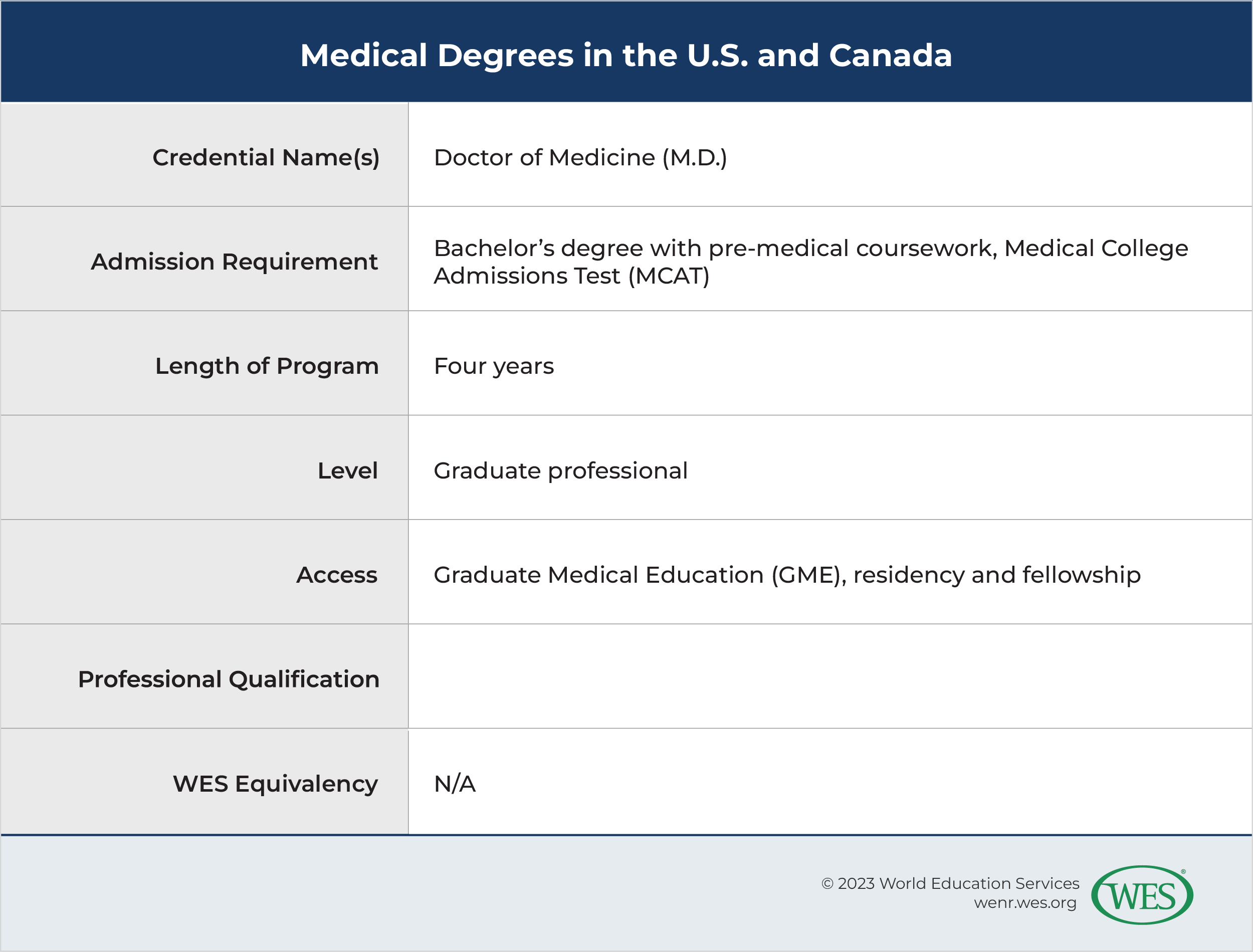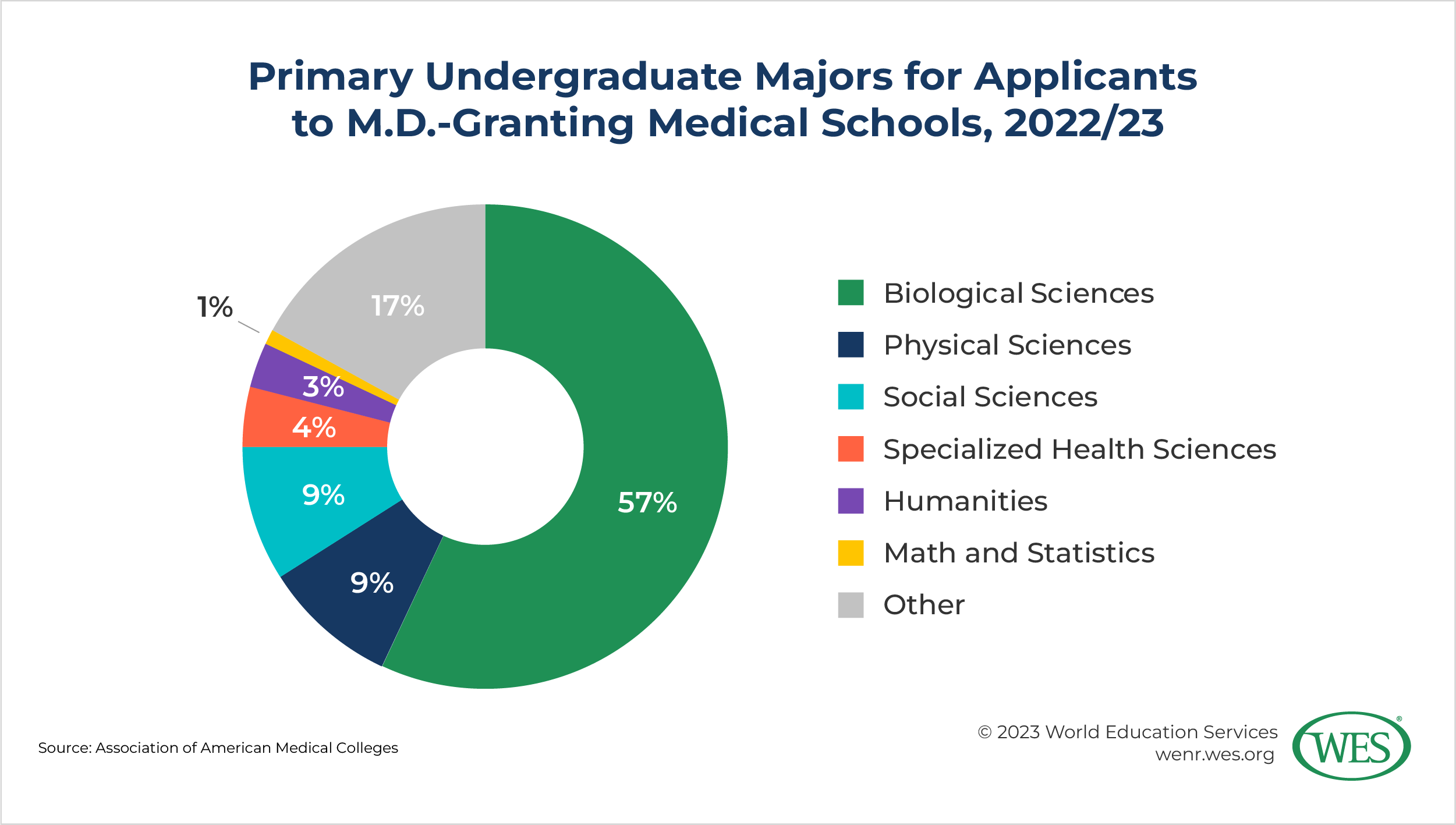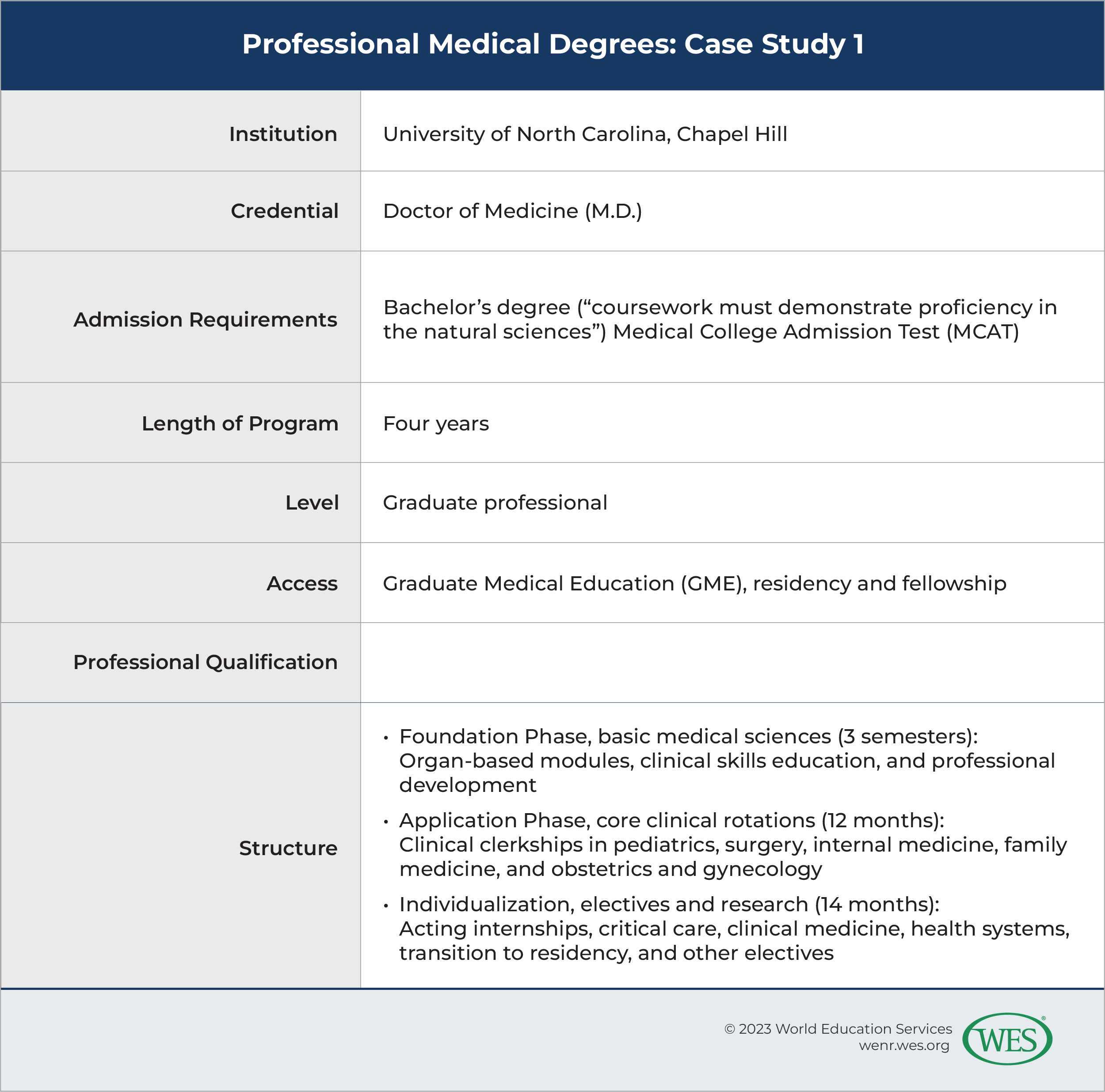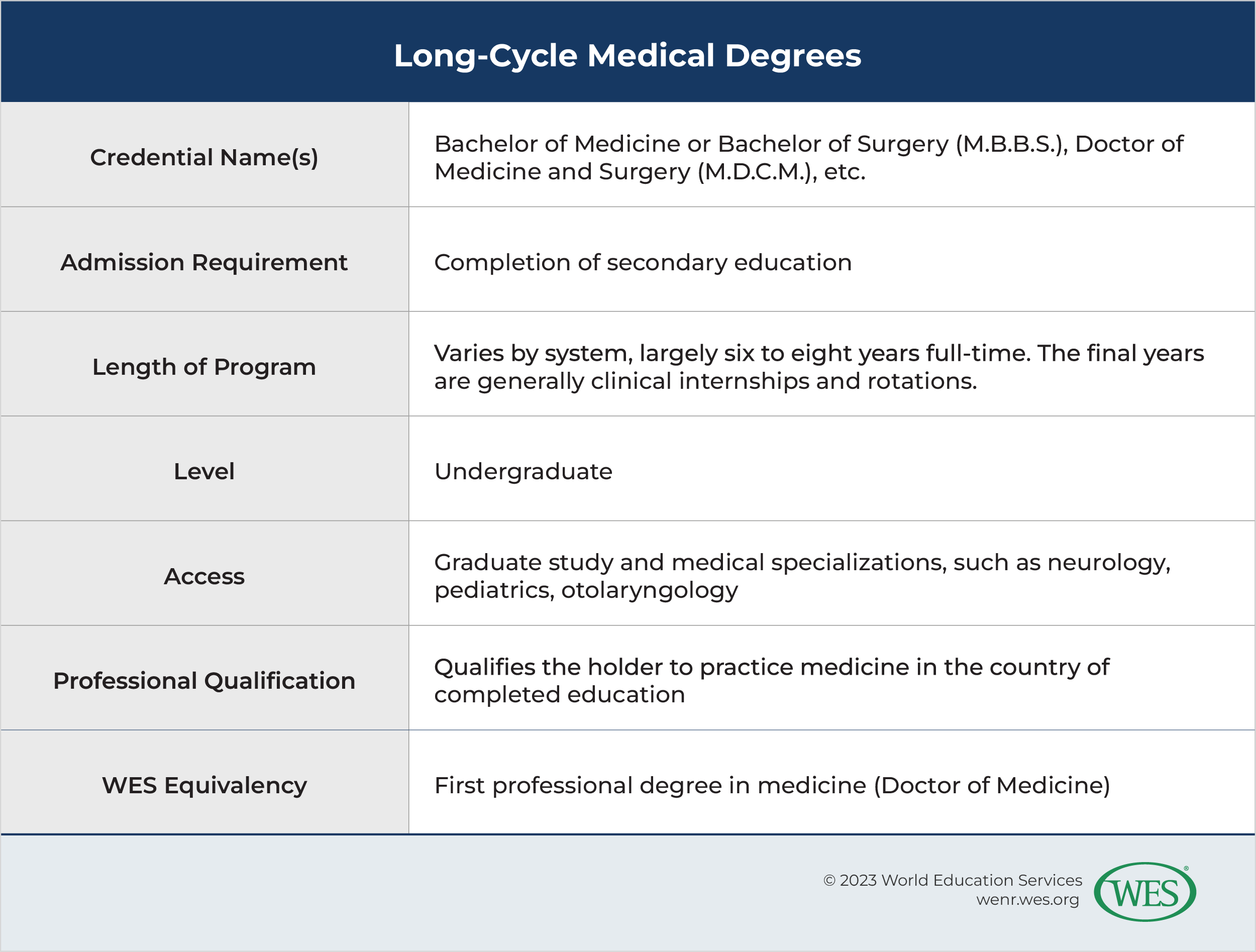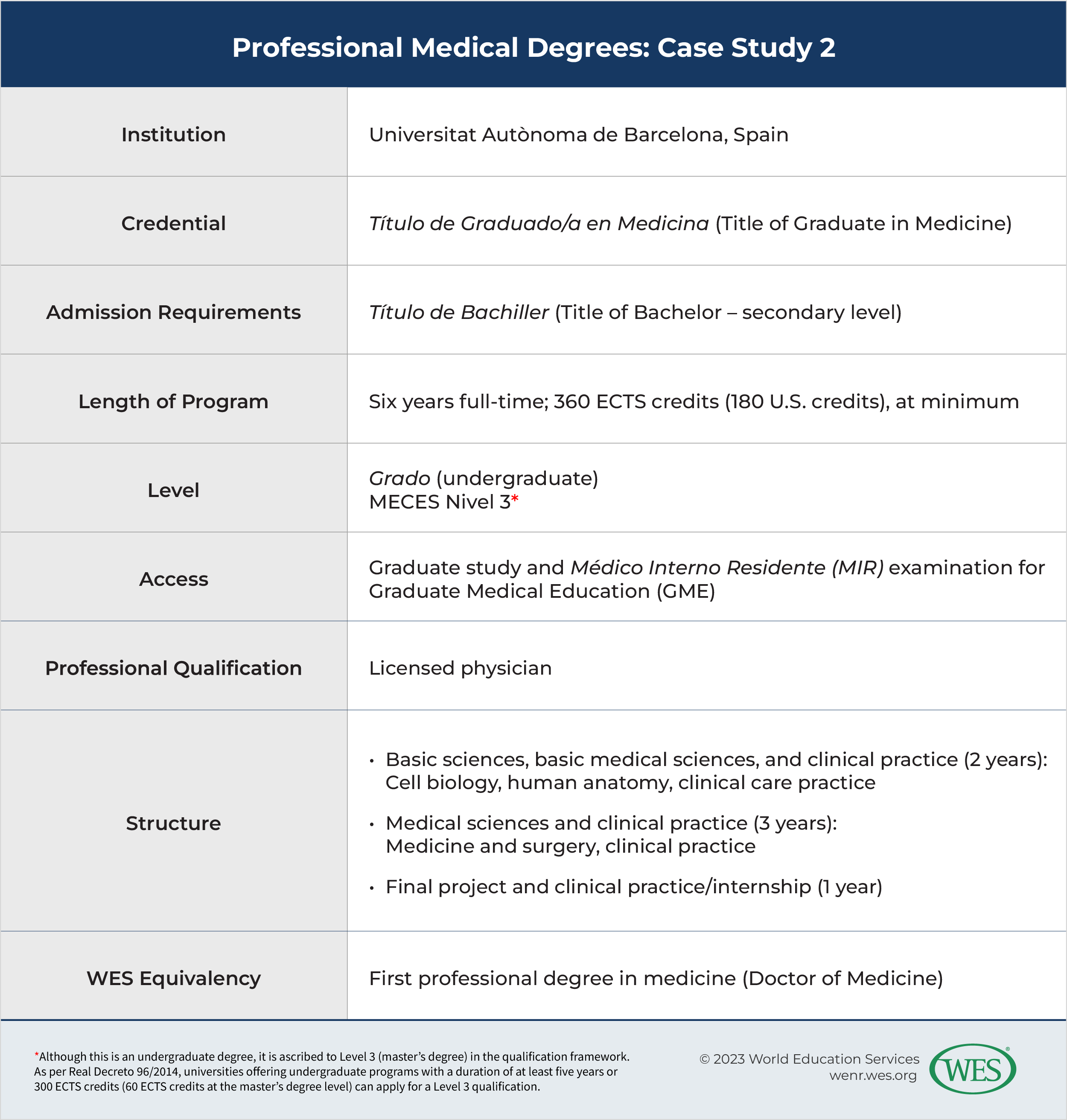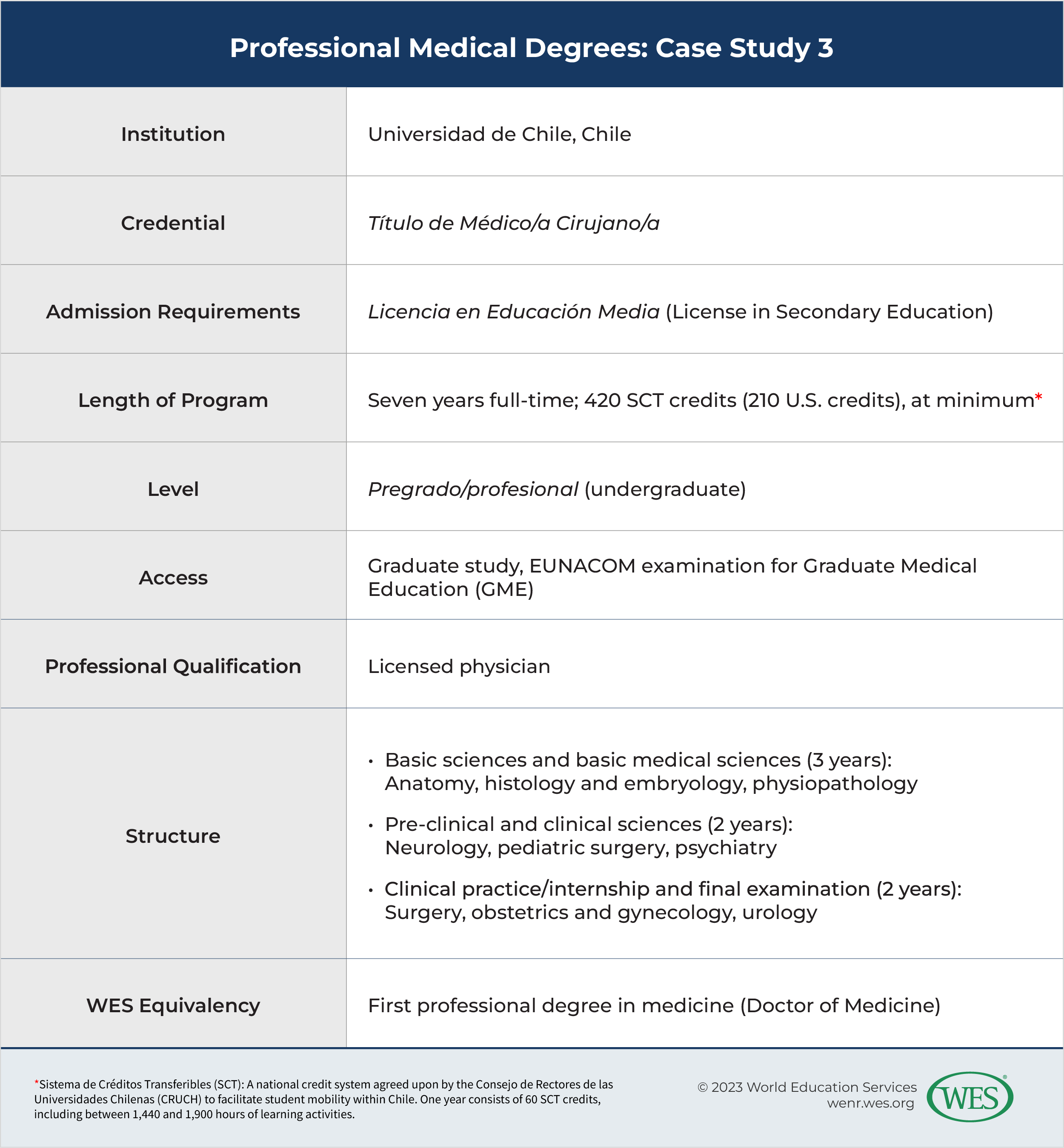Long-Cycle Professional Medical Programs Explained
Physician shortages are deepening across the United States and Canada. By 2034, the Association of American Medical Colleges (AAMC) projects a shortfall of between 37,800 and 124,000 physicians in the U.S. In Canada, the federal government estimates a nationwide shortage of around 44,000 doctors by 2028.
These deficits would be even more severe without internationally trained medical professionals. In 2021, one-fifth of all active doctors in the U.S. and Canada had been educated and trained overseas.
Many of these talented professionals train in programs that look very different from those in North America. Instead of four years of undergraduate study and four years of graduate medical training, these professionals often study in long-cycle, integrated medical training programs lasting from six to eight years.
This article provides a brief overview of long-cycle medical programs.1 It first reviews medical training in the U.S. and Canada, and then explores the long-cycle medical training programs common in much of the rest of the world. It also examines how World Education Services (WES) approaches the equivalency of these programs.
Medical Training in the U.S. and Canada
The four-year Doctor of Medicine (M.D.), taught at an accredited medical school, is the most common professional medical qualification in the U.S. and Canada.2
To be admitted to an M.D. program, students must first obtain a four-year undergraduate degree from an accredited institution. Although medical schools do not require applicants to major in specific undergraduate specializations, they do expect applicants to demonstrate an understanding of basic science and premedical subjects. Medical school admission requirements typically include premedical coursework and labs in subjects like biology, chemistry, mathematics, and physics, among others. Students are also required to take the Medical College Admission Test (MCAT), which consists of four sections:
- Biological and Biochemical Foundations of Living Systems
- Chemical and Physical Foundations of Biological Systems
- Critical Analysis and Reasoning Skills
- Psychological, Social, and Biological Foundations of Behavior
To meet these requirements, most prospective medical school students choose a science-related major at the undergraduate level. According to the AAMC, 57 percent of undergraduate applicants to U.S. medical schools majored in biology alone in 2022/23.
M.D. programs typically last four years and are divided into two, two-year phases: a preclinical phase and a clinical phase. The preclinical phase includes “two years of science training when [students] learn about basic medical concepts, the structure and functions of the body, diseases, diagnoses, and treatment concepts” as well as “the basics of doctoring.” The last two years of the program involve clinical rotations where students “receive basic instruction and hands-on experience with patients in the major medical specialties.”
After earning an M.D., graduates begin residency training, also known as graduate medical education (GME), where they “receive supervised, hands-on training.” Resident physicians can continue to “undertake a fellowship after completing their residencies, adding one to three years of study in a subspecialty area.”
After completing an accredited residency training program, which typically lasts three to seven years, and passing all required medical licensing examinations, these resident physicians can obtain a full medical license, allowing them to practice without supervision.
Case Study 1: M.D., University of North Carolina, Chapel Hill
An example of one of these medical programs is the M.D. program at the University of North Carolina, Chapel Hill. Click here for a PDF file of the academic documents referred to below.
Long-Cycle Medical Training
Unlike students entering a U.S. or Canadian M.D. program, those entering a long-cycle medical program are admitted after completing secondary education. Long-cycle medical qualifications go by various names, including Bachelor of Medicine, Bachelor of Surgery (MBBS) and Doctor of Medicine and Surgery. Although program length varies by country, long-cycle medical programs usually take between six and eight years of full-time study and training.
Long-cycle programs integrate both the premedical education obtained at the undergraduate level as well as the preclinical and clinical training conducted at the graduate level in U.S. and Canadian M.D. programs.
For example, in the first and second years of the seven-year Título de Médico/a Cirujano/a program at the Universidad de Chile, students are required to take biology, chemistry, mathematics, and physics—all subjects that are typical prerequisites for admission to U.S. and Canadian M.D. programs. Alongside these premedical courses, students also take courses common in the preclinical and clinical phases of U.S. and Canadian M.D. programs. The final years of these programs are generally dedicated to clinical internships and rotations.
Just like those completing a U.S. or Canadian M.D. program, graduates of long-cycle programs are eligible to pursue a medical license and enroll in GME, including medical specializations, master’s degrees, and in many cases, doctoral degrees. In some countries, M.D. program graduates are also qualified to teach at the secondary or tertiary levels.
Case Study 2: Título de Graduado/a en Medicina, Universitat Autònoma de Barcelona in Spain
An example of a long-cycle program is the Título de Graduado/a en Medicina (Title of Graduate in Medicine) offered at the Universitat Autònoma de Barcelona in Spain. Click here for a PDF file of the academic documents referred to below.
Upon graduating from the program, doctors must register with the Colegio Oficial de Médicos of the province in which they will practice. If they would like to pursue a graduate medical specialization, they must complete the Médico Interno Residente (MIR) examination for entry. Residency training for medical specializations has a duration of four or five years, depending on the program, and generally includes one year of introductory training in the specialization and three or four years of clinical rotations. Upon successful completion of the program and a final evaluation, the Ministerio de Sanidad confers the Título de Especialista.3 Medical specialists may request entry into the Registro Estatal de Profesionales Sanitarios (REPS) database, allowing the general public to verify their credentials.
How Does WES Evaluate Long-Cycle Medical Degrees?
Although long-cycle medical degrees are frequently classified as undergraduate-level qualifications, they differ significantly from other undergraduate degrees. Notably, unlike typical undergraduate credentials, long-cycle medical degrees contain significant clinical practice components, require relatively lengthy periods of study and training, and prepare students to work in a particular profession.
In recognition of the ways that long-cycle medical degrees differ from both standard bachelor’s degree programs and typical M.D. programs, WES considers completed long-cycle medical programs equivalent to a first professional degree in medicine (Doctor of Medicine).
First Professional Degrees in the U.S. and Canada
The term first professional degree has been common in the U.S. and Canada for decades. Until recently the National Center for Education Statistics in the U.S. defined a first professional degree as:
An award that requires completion of a degree program that meets all of the following criteria: (1) completion of the academic requirements to begin practice in the profession; (2) at least 2 years of college work before entering the degree program; and (3) a total of at least 6 academic years of college work to complete the degree program, including previously required college work plus the work required in the professional program itself. First-professional degrees may be awarded in the following 10 fields: chiropractic (D.C. or D.C.M.), osteopathic medicine (D.O.), dentistry (D.D.S. or D.M.D.), pharmacy (Pharm.D.), law (L.L.B. or J.D.), podiatry (D.P.M., D.P., or Pod.D.), medicine (M.D.), theology (M.Div., M.H.L., B.D., or Ordination), optometry (O.D.), and veterinary medicine (D.V.M.).
The 2007 Canadian Degree Qualifications Framework describes something similar when it discusses bachelor’s degrees with a professional focus, noting that:
They are designed to prepare graduates to meet admission requirements and to be competent practitioners in the profession. Some of them are first-entry programs, others are second-entry programs (that is, they require some prior degree-level study or even a degree). They normally require periods of practical experience (apprenticeship, internship, articling, clinical, etc.). The capacity for independent professional work is demonstrated by academic and practical exercises, under supervision, followed by admission tests to the profession. Though considered to be bachelor’s programs in academic standing, some professional programs yield degrees with other nomenclature.
Examples: DDS (Dental Surgery), MD (Medicine), LLB, or JD (Juris Doctor)
When assessing whether an international qualification is equivalent to a first professional degree in medicine (Doctor of Medicine), WES considers the structure, scope, level, and intent of the program. As with non-medical programs, these factors are often expressed in terms of admission requirements, program content and structure, and the function the credential is designed to serve in the home country.
With respect to medical programs, we ask:
- Program content:
- Does the program include a significant clinical and practical component? U.S. and Canadian M.D. programs include clinical and practical training, while standard U.S. bachelor’s degrees are composed primarily of theoretical study.
- Educational and professional outcomes:
- Does completion of the program give graduates access to GME in their home country (such as specializations and medical research)?
- Does completion of the program qualify graduates to pursue a license in their home country?
WES only considers programs that meet the above standards—as well as more general accreditation and other standards—to be equivalent to a first professional degree in medicine (Doctor of Medicine).
Case Study 3: Título de Médico/a Cirujano/a, Universidad de Chile
Universidad de Chile offers a professional medical program at the pregrado (undergraduate) level. At this level of education in Chile, both a grado académico (academic degree) and a título profesional (professional title) are offered.
In the case of medicine, students are eligible to receive an academic degree, the Licenciado/a en Medicina, after five years of study. This five-year academic degree provides access to many graduate programs, but not to graduate medical specializations. It also does not qualify its holder to practice medicine in Chile. For these reasons, WES considers the Licenciado/a en Medicina equivalent to five years of professional study in medicine, and not to a first professional degree in medicine (Doctor of Medicine).
To practice medicine in Chile, students must obtain the Título de Médico/a Cirujano/a, which requires an additional two years of training dedicated to internships and clinical rotations and earning a passing score on a final examination. WES considers this completed Título de Médico/a Cirujano/a to be equivalent to a first professional degree in medicine (Doctor of Medicine).
In 2009, the Ministry of Health implemented the Examen Único Nacional de Conocimientos de Medicina (EUNACOM), required for doctors who wish to pursue graduate medical specializations or employment in the public health service. The examination includes both theoretical and practical components, testing the doctor’s overall medical knowledge and experience. Medical degrees earned outside of Chile are automatically validated upon passing of the examination, exempting prior degree holders from any further educational requirements.
Click here for a PDF file of the academic documents referred to below.
1. For a discussion of long- and short-cycle medical programs and their relative merits in Europe, see our previous article: Incompatible With Bologna? The Two-Cycle Degree Structure in Medical Education in the EHEA).
2. Some institutions in the U.S. and Canada offer integrated HS+6 programs or fast-track 2+4 programs.
3. Before 2022, this qualification was conferred by the Ministerio de Universidades.

